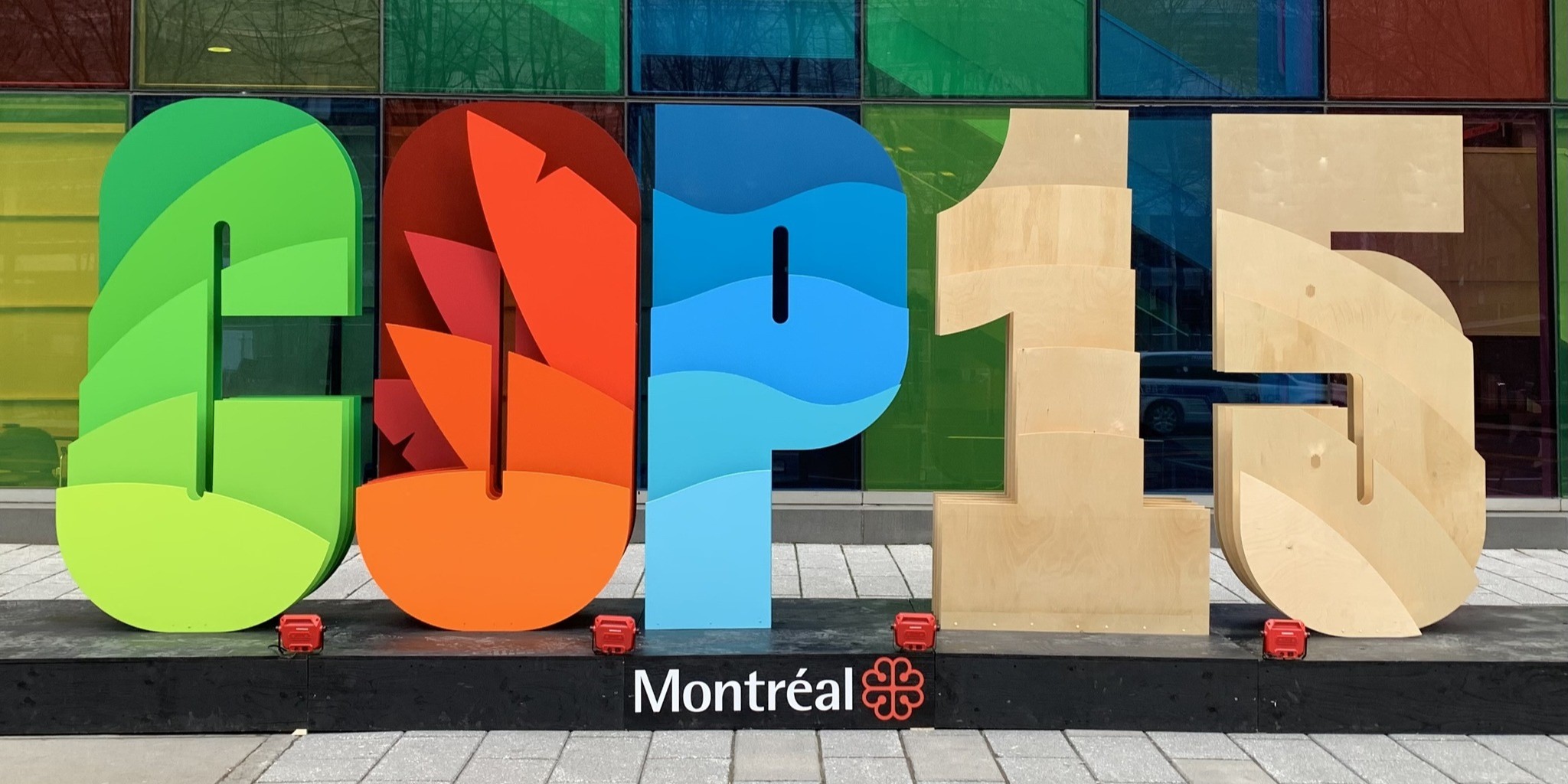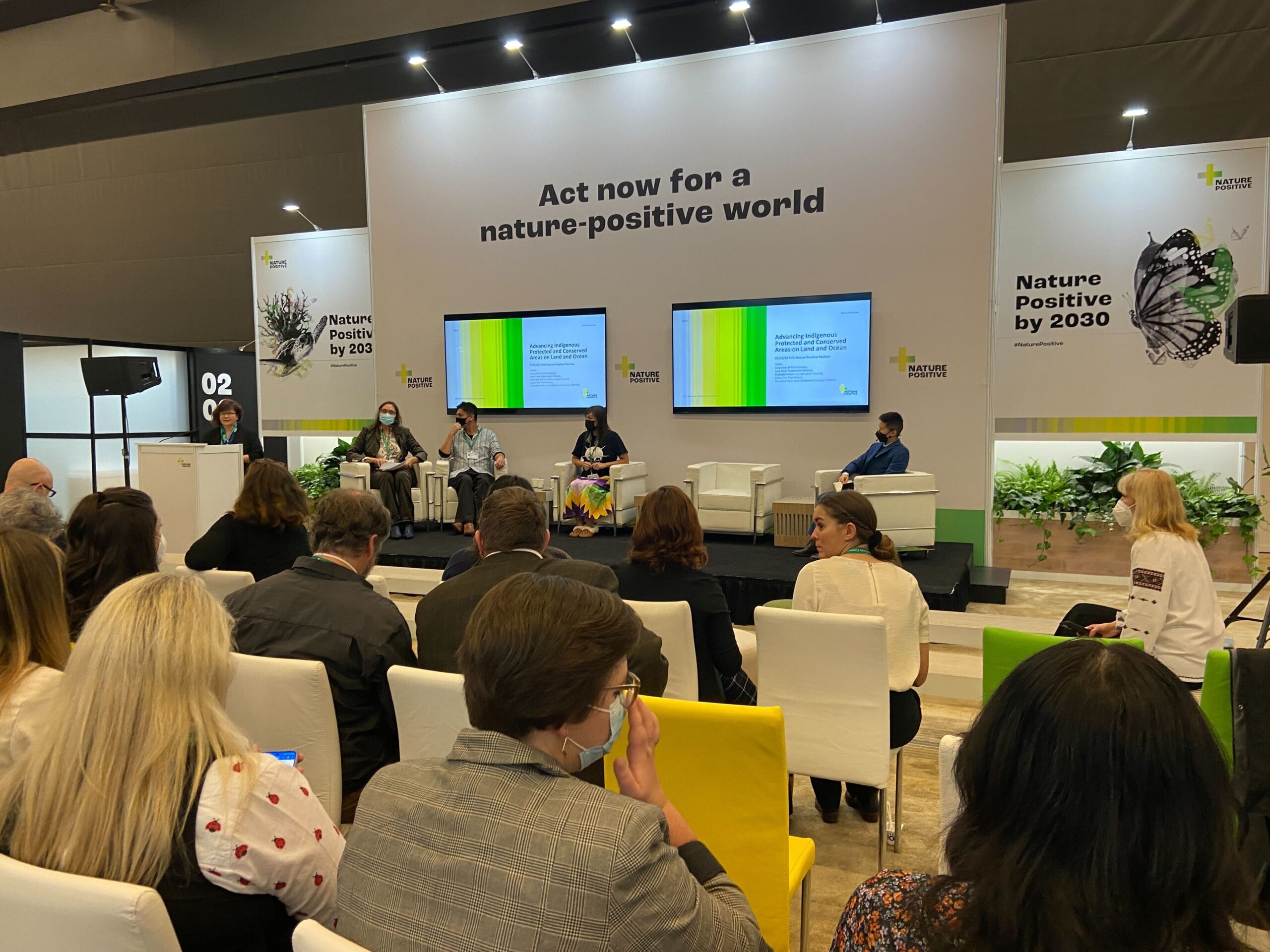Embracing intuition and connection at COP15

Written by Joti Overduin, Outreach Manager
June 29, 2023
I feel so grateful for the opportunity to witness, fully listen, and learn at the UN Biodiversity Conference (COP 15) in the unceded territory of the Kanien’keha:ka, Montréal. I witnessed so many inspiring people generously share their stories. All of them working so hard for what they believe in – for many things that align with my beliefs and that I want to support.
My first morning at COP15 I walked in disoriented and ungrounded from the jet-lag, exhausted from the unrelenting months prior, and with a heart broken from the tragic and unfair death of a beautiful First Nation woman that I care about very much.
I need to start with this because I’ve learned that it’s important to situate oneself, on multiple levels. How I came into those rooms in Montréal matters. How each of us enter into all spaces matters.
Everything we hear and work to understand is filtered through our life experiences. Throughout COP15 I was trying to understand the role of CPAWS Yukon, and my role personally in our collective work addressing the twin crises of our time, climate change and biodiversity loss (aka massive losses of life across the globe). My mind and heart were also working to process and make sense of the loss of a dear friend, and trying to find some healing from the sufferingthat her death highlighted. She is one of too many beautiful young people that have been lost here in the North, and the pain and grief is reverberating throughout so many families and communities. I don’t see these crises as separate to this.
This is why I am so grateful for what I encountered on my first day after stumbling my way into COP15 and navigating through police-armed entrances with airport-style security screening. In the brightly lit and spacious Nature Positive Pavilion, I was relieved to find an empty seat beside friend and colleague Katie Morrison (one of those strong, talented and very quiet, humble leaders), from the CPAWS Southern Alberta Chapter.
Soon after sitting down, Patti Saulis, member of the Maliseet tribe of Indigenous people, was introduced to open the event. Patti wore a long skirt with a very large and beautiful salmon sewn onto the front. She later explained that this was very much intentional, as she and her people are working very hard to bring their salmon back from the brink of extinction, and having that salmon with her gives her strength.
Patti first explained to everyone that what she was doing with us was more accurately described as an invocation. An invocation goes beyond an opening ceremony and accesses our intuition. We were all about to have important stories, perspectives, and experiences shared with us, she said, something that requires and deserves us to listen with more than our ears. This immediately brought me back to my first week in the Indigenous Protected and Conserved Areas Program with Iisaak Olam and Victoria Island University where we were welcomed into Tla-O-Qui-Aht Lands by Gisele Martin, Tla-o-qui-aht Tribal Parks Guardian and educator, outdoor guide, public speaker, land vision coordinator, and artist. Gisele welcomed us in her Nuu-chah-nulth language, and explained that part of what she said was a request for us to listen, not just with our ears but with our whole body, mind, spirit, heart, and intuition. This is what allows for real understanding.

Speakers at the CPAWS Panel included Patti Saulis, Matthew Munson, Stephanie Thorassie, and Wanli Ou.
Patti’s invocation was a song, she referred to it as the River Song, one that connects us to our own waters, and brings our grandmothers and grandfathers here with us and all of their wisdom as we talk about the future. As Patti so generously sang and shared this invocation with us, I was brought out of my head and back into my soul. I felt grounded into my whole being, allowing me to fully listen and see and understand what was about to be shared with me over the course of my next five days at the conference. I felt the presence of my ancestors, none who had roots in Canada but nonetheless rooted to waters in other parts of the globe, and my own deep connection to water throughout my life. I thought about people who lived, traveled, and have such deep knowledge and connection to the clear, beautiful and powerful mountain rivers throughout the North. Tears flowed down my cheeks silently and steadily, not unlike a river. The first of multiple times throughout the conference.
This was not what I had expected coming into a UN Convention. But why not? Why shouldn’t we all expect this – to open in a good way? To invoke all of our intuitions collectively so that we can be fully present as we work together on some of the most important issues of our time?
It was clear from the first moment of my first day that the world has an opportunity to learn a great deal from Indigenous neighbours and friends. I felt, and continue to feel, hopeful after witnessing this inside of such a large and seemingly impenetrable and political conference.
Many things that seem separate or have separate titles, policies, working groups, and government departments are so much more clearly interconnected. Reconciliation, inclusion, respect, solving the crises of our time, and healing ourselves – these are not separate things. There is no small number of people impacted by these things, and no small number who care. Finding more ways to work together and support each other has already proven how much can be done, and I am excited to find more ways of doing this in my own life.
